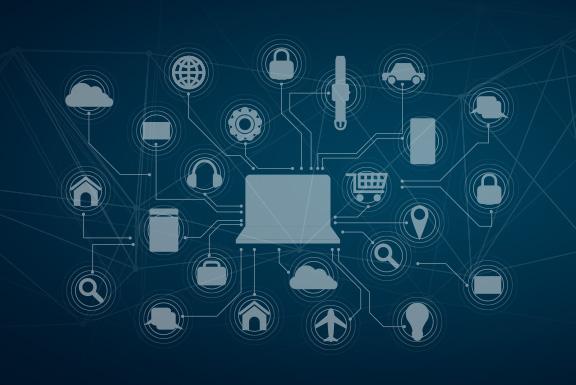- About Us
-
-
- About UsWe are the regional leaders in cybersecurity. We are masters in our tradecraft. We are dynamic, talented, customer-centric, laser-focused and our mission is to defend and protect our customers from cyber adversaries through advisory, consulting, engineering, and operational services.
-
-
- Solutions
-
-
- SolutionsThe cybersecurity industry is fragmented. We have carefully curated an interoperable suite of cybersecurity products and solutions that focus on improving your security compliance and risk maturity that add real business value, effectiveness, and ROI. Combined with our professional services and security engineering expertise we design, architect, implement and operate complex environments and protect your digital space.
-
- Industry
-
-
- IndustryCyber adversaries and threat actors have no boundaries. No industry is immune to cyber-attacks. Each industry has unique attributes and requirements. At DTS we have served all industry verticals since inception and have built specialization in each segment; to ensure our customers can operate with a high degree of confidence and assurance giving them a competitive advantage.
-
- Services
-
-
- ServicesOur cybersecurity services are unmatched in the region. With our unique customer-centric approach and methodology of SSORR we provide end-to-end strategic and tactical services in cybersecurity. We on-ramp, develop, nurture, build, enhance, operationalize, inject confidence, and empower our customers.
-
-
- Vendors
- Products
- Resources
- Press Center
- Tweets
- Support
- Contact
-
Cyber Transformation
Lorem ipsum dolor sit amet, consectetur adipiscing elit. Ut elit tellus, luctus nec ullamcorper mattis, pulvinar dapibus leo.
DTS can support you in your cyber security transformational program that will be aligned to your business transformation initiatives. Our experience and agility will support your business initiatives by deploying a team of consultants who will be able to build the relevant assurance frameworks, requirements, security controls and provide consulting on the implication of cyber security and relevant threats and risks related to the new transformation programs you may be planning to execute.

Creating a sound “Cyber Security Transformation Program”
- Blockchain and Smart Contract Audits
- Public and Private Cloud – PaaS, SaaS and IaaS
- Managed Security Services Due Diligence
- Big Data and Securing the Data Lake
- Security for Smart City
- Fintech Security
- SDN and NFV – Security
- Artificial Intelligence
- Identity Access and Management Program
- Data Protection Program
Creating a sound “Cyber Security Transformation Program”

As industry leaders and organizations look at digital disruption as a vehicle to stay one step ahead of the innovation curve; Smart City, Big Data, Cloud, IoT, Blockchain, Fintech and Artificial Intelligence to name a few, the need and importance to ensure equivalent transformation is adopted in the field of cyber security must be understood by the executive management.
Similarly, IoT is likely to change the way real-time telemetry data can be obtained from field devices yet devices themselves have low computational power to have any form of embedded security controls. IoT adoption pushes the boundaries of traditional cyber security controls, as they are considered Cyber-Physical Systems and can have impact to the physical state or process. For example, hacking a computer sitting at your home has different impact level to hacking a traffic light on a main junction on a busy road that is digitally connected.
- Blockchain and Smart Contract Audits
- Public and Private Cloud – PaaS, SaaS and IaaS
- Managed Security Services Due Diligence
- Big Data and Securing the Data Lake
- Security for Smart City
- Fintech Security
- SDN and NFV – Security
- Artificial Intelligence
- Identity Access and Management Program
- Data Protection Program
Solutions
Network and Infrastructure Security
Zero Trust and Private Access
Endpoint and Server Protection
Vulnerability and Patch Management
Data Protection
Application Security
Secure Software and DevSecOps
Cloud Security
Identity Access Governance
Governance, Risk and Compliance
Security Intelligence Operations
Incident Response
Dubai
Office 7, Floor 14
Makeen Tower, Al Mawkib St.
Al Zahiya Area
Abu Dhabi, UAE
Mezzanine Floor, Tower 3
Mohammad Thunayyan Al-Ghanem Street, Jibla
Kuwait City, Kuwait
+971 4 3383365
[email protected]
160 Kemp House, City Road
London, EC1V 2NX
United Kingdom
Company Number: 10276574
The website is our proprietary property and all source code, databases, functionality, software, website designs, audio, video, text, photographs, icons and graphics on the website (collectively, the “Content”) are owned or controlled by us or licensed to us, and are protected by copyright laws and various other intellectual property rights. The content and graphics may not be copied, in part or full, without the express permission of DTS Solution LLC (owner) who reserves all rights.
DTS Solution, DTS-Solution.com, the DTS Solution logo, HAWKEYE, FYNSEC, COMPLYAN, FRONTAL, HAWKEYE CSOC WIKI and Firewall Policy Builder are registered trademarks of DTS Solution, LLC.
Privacy Overview
| Cookie | Duration | Description |
|---|---|---|
| cookielawinfo-checbox-analytics | 11 months | This cookie is set by GDPR Cookie Consent plugin. The cookie is used to store the user consent for the cookies in the category "Analytics". |
| cookielawinfo-checbox-functional | 11 months | The cookie is set by GDPR cookie consent to record the user consent for the cookies in the category "Functional". |
| cookielawinfo-checbox-others | 11 months | This cookie is set by GDPR Cookie Consent plugin. The cookie is used to store the user consent for the cookies in the category "Other. |
| cookielawinfo-checkbox-necessary | 11 months | This cookie is set by GDPR Cookie Consent plugin. The cookies is used to store the user consent for the cookies in the category "Necessary". |
| cookielawinfo-checkbox-performance | 11 months | This cookie is set by GDPR Cookie Consent plugin. The cookie is used to store the user consent for the cookies in the category "Performance". |
| viewed_cookie_policy | 11 months | The cookie is set by the GDPR Cookie Consent plugin and is used to store whether or not user has consented to the use of cookies. It does not store any personal data. |